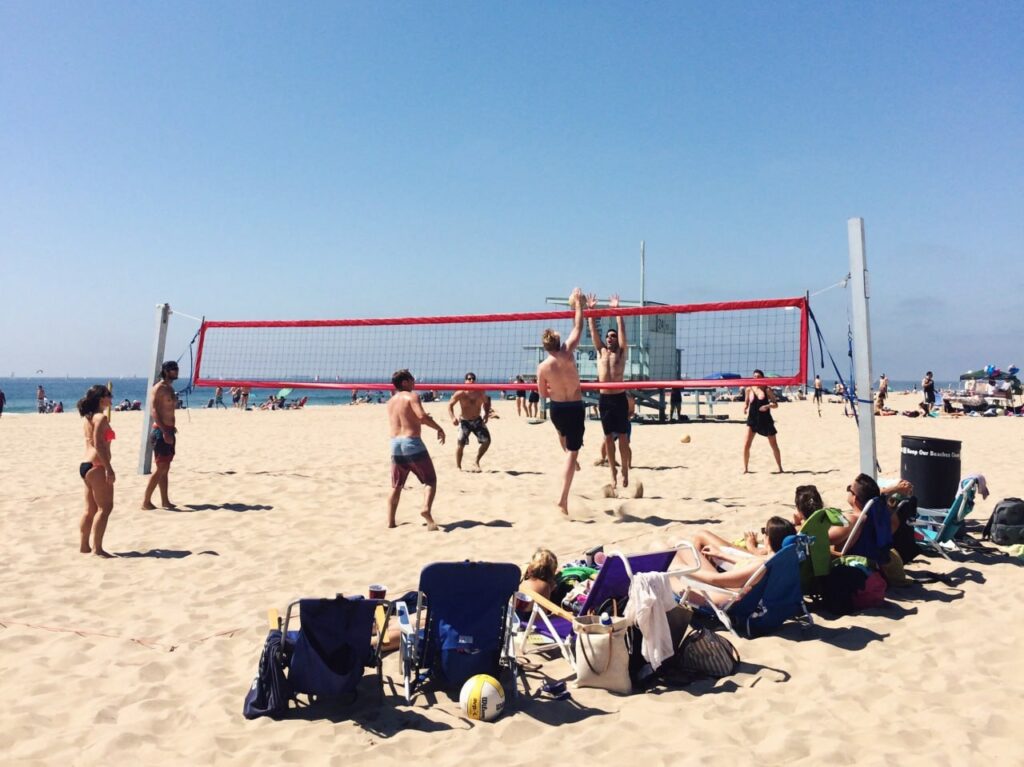In the sun-drenched arenas of beach volleyball, where every serve, shot and movement counts, technology is creating new trends, changing the way young athletes train, analyze and improve their game. Incorporating advanced technological tools into beach volleyball training programs not only improves the performance of young talent, but also sets new standards for coaching methodologies in the sport.
Let’s take a look at the key technologies at the forefront of preparing tomorrow’s beach volleyball champions and illustrate their impact on the development of young athletes.

Video Analysis Tools
High-definition video analysis software has become an essential tool in a beach volleyball coach’s arsenal. Platforms such as Dartfish and Hudl provide coaches and athletes with the ability to thoroughly analyze game footage, accurately dissecting opponents’ techniques, strategies and behaviors.
These tools allow for frame-by-frame study, allowing athletes to examine their movements and identify areas for improvement. Coaches can highlight specific moments of play, draw and annotate directly on the video to provide clear visual feedback.
The use of video analysis has led to significant improvements in technique, tactical awareness, and game intelligence in junior beach volleyball players. Through visual analysis, athletes gain a deeper understanding of their strengths and weaknesses, allowing for targeted improvement.
Wearable Fitness Trackers
The availability of wearable technology has redefined the way we track and improve athletic performance. Devices such as Fitbit and Garmin sports watches provide real-time data on physical performance, including heart rate, calories burned, sleep patterns and even jump height.
These wearable devices sync with smartphones and computers, giving athletes and coaches accessible dashboards to track performance metrics over time. Customizable alerts and goals help focus workouts and make them effective.
For youth beach volleyball players, wearable fitness trackers can monitor physical condition and training intensity to provide a personalized workout regimen. Monitoring recovery and sleep patterns also helps prevent overtraining and injury, which is critical to the long-term development of young athletes.
Virtual Coaching Platforms
Virtual coaching platforms such as CoachUp and BetterAt bridge the gap between athletes and the best coaches, regardless of geographic limitations. These platforms offer customized coaching sessions, training programs, and mentoring opportunities through online interfaces.
Athletes can upload videos of their games or practices to get in-depth feedback from experienced coaches. Real-time virtual sessions, augmented reality environments and community forums provide an interactive and comprehensive coaching experience.
Virtual coaching platforms democratize access to elite coaches, allowing young beach volleyball athletes to learn from the best in the sport. This personalized guidance accelerates skill development and strategic understanding, meeting the unique needs of each athlete.
Sports Analytics and Biomechanical Assessments
Integrating sports analytics and biomechanical assessments into beach volleyball training offers a scientific approach to improving athletic performance. Tools such as VERT measure jump height and count jump counts during practices and matches, providing valuable data to analyze performance.
Using motion capture technology and advanced analytics software, coaches can assess the biomechanics of an athlete’s movements and identify optimal techniques and areas for biomechanics improvement.
Applying sports analytics and biomechanical assessments to training programs results in increased movement efficiency, reduced risk of injury, and improved overall performance. Young beach volleyball players benefit from individualized training that maximizes their physical potential and minimizes wear and tear on the body.
Social Media and Online Communities
Beyond the tangible technologies, social media platforms and online communities play a pivotal role in the training and development of junior beach volleyball players. Platforms like Instagram and YouTube offer an abundance of instructional content, while forums and groups provide spaces for discussion and knowledge exchange.
Athletes can follow professional players and coaches, accessing training tips, motivational content, and behind-the-scenes insights into professional training regimes.
Future Is Now!
The landscape of junior beach volleyball training is undergoing transformational change through the integration of cutting-edge technology. From the precision of video analysis and the insight of wearable fitness trackers to the personalized guidance of virtual coaching platforms and the support of online communities, technology is playing a central role in shaping the champions of tomorrow.
As these technological tools become increasingly embedded in training methodologies, the future of beach volleyball promises athletes not only physical fitness, but also tactical and strategic literacy ready to take the sport to new heights.

